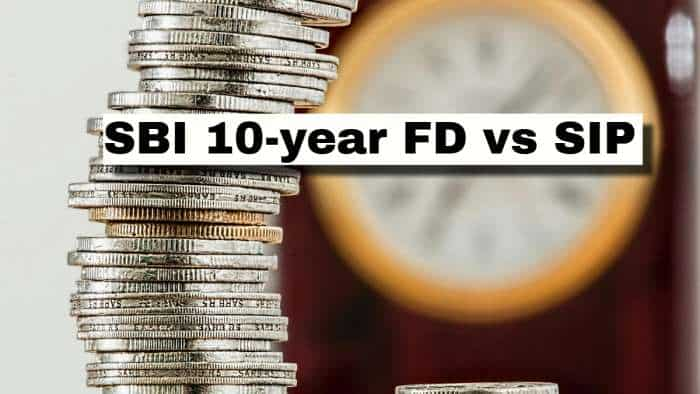Want to avail benefit of tax exemption? Invest in this India Post scheme
If you want to avail the benefit of tax exemption then you can invest in Public Provident Fund (PPF) with India Post.

If you want to avail the benefit of tax exemption then you can invest in Public Provident Fund (PPF) with India Post.
India Post recently tweeted, "Invest in Public Provident Fund (PPF) with India Post to avail the benefit of tax exemption."
See Zee Business Live TV Streaming Below:
Here is all you need to know about Public Provident Fund (PPF):
1. Who can open?
A single adult who is an Indian resident, a guardian on behalf of minor/ person of unsound mind, can open PPF account with India Post. However, it needs to be noted that only one account can be opened all across the country either in Post Office or any Bank.
Invest in Public Provident Fund (PPF) with India Post to avail the benefit of tax exemption. To know more, visit: https://t.co/oDktgemmMY #AapkaDostIndiaPost
— India Post (@IndiaPostOffice) October 20, 2021
2. Deposit
Minimum deposit is Rs 500 in a Financial Year and Maximum deposit is Rs 1.50 lakh in a FY. Maximum limit of Rs 1.50 lakh shall be inclusive of the deposits made in his/her own account and in the account opened on behalf of minor. Amount can be deposited in any number of installments in a FY in multiple of Rs 50 and maximum up to Rs 1.50 lakh.
Also, account can be opened by cash/cheque and in case of cheque the date of realization of cheque in government account shall be date of opening of account/subsequent deposit in account. It can be noted that deposits qualify for deduction under section 80C of Income Tax Act.
3. Discontinuation of account
If in any financial year, minimum deposit of Rs 500 is not made, the said PPF account shall become discontinued. Loan/withdrawal facility is not available on discontinued accounts.
However, discontinued account can be revived by the depositor before maturity of the account by deposit minimum subscription (i.e. Rs 500) + Rs 50 default fee for each defaulted year.
4. Interest
Interest shall be applicable as notified by Ministry of Finance on quarterly basis. The interest shall be calculated for the calendar month on the lowest balance in the account between the close of the fifth day and the end of the month. Interest earned is tax free under Income Tax Act.
5. Withdrawal
A subscriber can take 1 withdrawal during a financial after five years excluding year of account opening. Amount of withdrawal can be taken up to 50% of balance at the credit at the end of 4th preceding year or at the end of preceding year, whichever is lower.
6. Maturity
Account maturity is after 15 F.Y. years excluding FY of account opening. On maturity depositor has the following options:-
a. Can take maturity payment by submitting account closure form along with passbook at concerned Post Office.
b. Can retain maturity value in his/her account further without deposit, the PPF interest rate will be applicable and payment can be taken any time or can take 1 withdrawal in each FY.
c. Can extend his/her account for further block of 5 years and so on (within one years of maturity) by submitting prescribed extension form at concerned Post Office.
d. In extended account with deposits, 1 withdrawal can be taken in each FY subject to maximum limit 60% of balance credit at the time of maturity in the block of 5 years.
7. Premature closure
Premature closure shall be allowed after 5 years from the end of the year in which the account was opened subject to following conditions.
a. In case of life threatening disease of account holder, spouse or dependent children.
b. In case of higher education of account holder or dependent children.
c. In case of change of resident status of account holder ( i.e. became NRI).
At the time of premature closure 1% interest shall be deducted from the date of account opening/date of extension as the case may be. Account can be closed on above conditions by submitting prescribed form along with pass book at concerned Post Office.
Get Latest Business News, Stock Market Updates and Videos; Check your tax outgo through Income Tax Calculator and save money through our Personal Finance coverage. Check Business Breaking News Live on Zee Business Twitter and Facebook. Subscribe on YouTube.
RECOMMENDED STORIES

LIC Saral Pension Plan: How to get Rs 64,000 annual pension on Rs 10 lakh one-time investment in this annuity scheme that everyone is talking about

Gratuity Calculation: What will be your gratuity on Rs 45,000 last-drawn basic salary for 6 years & 9 months of service?

Rs 1,500 Monthly SIP for 20 Years vs Rs 15,000 Monthly SIP for 5 Years: Know which one can give you higher returns in long term

Income Tax Calculations: What will be your tax liability if your salary is Rs 8.25 lakh, Rs 14.50 lakh, Rs 20.75 lakh, or Rs 26.10 lakh? See calculations

8th Pay Commission Pension Calculations: Can basic pension be more than Rs 2.75 lakh in new Pay Commission? See how it may be possible

SBI Revamped Gold Deposit Scheme: Do you keep your gold in bank locker? You can also earn interest on it through this SBI scheme

Monthly Pension Calculations: Is your basic pension Rs 26,000, Rs 38,000, or Rs 47,000? Know what can be your total pension as per latest DR rates
04:47 PM IST











 Return Comparison: SIP or PPF? Which investment can yield higher returns with Rs 9,500 annually?
Return Comparison: SIP or PPF? Which investment can yield higher returns with Rs 9,500 annually? SIP vs PPF: Which investment can build larger corpus with Rs 70,500 annually?
SIP vs PPF: Which investment can build larger corpus with Rs 70,500 annually? Return Comparison: SIP vs PPF – Which investment can build larger corpus with Rs 9,500 annually?
Return Comparison: SIP vs PPF – Which investment can build larger corpus with Rs 9,500 annually? SIP vs PPF: Risk or Guarantee? This investment option may help you reach Rs 1 crore milestone first
SIP vs PPF: Risk or Guarantee? This investment option may help you reach Rs 1 crore milestone first How to earn Rs 65.58 lakh, Rs 1.10 cr, and Rs 1.74 cr from interest in this Post Office scheme
How to earn Rs 65.58 lakh, Rs 1.10 cr, and Rs 1.74 cr from interest in this Post Office scheme